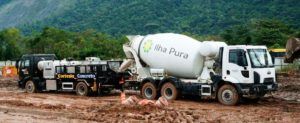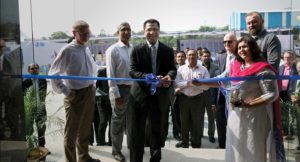Anand Sundaresan, Vice Chairman & Managing Director of SCHWING Stetter, a 100 per cent subsidiary of German Multinational SCHWING GmbH, says that the company has been a firm believer of manufacturing in India since the time it entered the country in 2000 and aims to reduce component import costs as much as possible by encouraging domestic manufacturers.

With a growth of 16 per cent in 2015, SCHWING Stetter, a 100 per cent subsidiary of German Multinational SCHWING GmbH, is all set to capitalise on the positive trend in the construction equipment industry. “While the first half of 2015 was not good for the industry as a whole and for construction equipment sector in specific, things have improved now,” says Anand Sundaresan, Vice Chairman & Managing Director. However, he is quick to add that the growth is limited to road projects so far and hence, construction equipment companies and road equipment manufacturers are likely to benefit. The recent boost given to the construction equipment industry through large investment announcement made in the Union Budget towards infrastructure, especially roads that include improvement in rural roads and North Eastern connectivity, has the company optimistic about maintaining a good growth rate, going forward. “This apart, the announcement to upgrade the State highways to the level of national highways will be a boost for companies catering to the road sector,” says Sundaresan.
Make everything in India!
“We are very interested in making everything locally, including all the inputs that gets into our equipment,” states Sundaresan. The reasons for this are very simple. One, the company has to pay exchange rate fluctuations which results in cost increase which is not passed on to the customer. Two, when it imports components, its logistics cost rises. Today, depending upon the industry in which it operates, most of the companies import around 30 per cent to 40 percent of their input components as they are not manufactured in India. He adds,” Companies that have done maximum indigenization have better profitability than those who are importing more.”
Commenting more specifically about SCHWING Stetter, Sundaresan says, “If I break the different inputs that get into our equipment, there are certain high value items not being produced in India like hydraulic pumps and motors. Even if hydraulic cylinders are available locally, its components are being imported.” While the company’s import content is only around 25 per cent, indirectly its imports about 30 per cent to 35 per cent. And for this to change, the growth prospects have to become attractive for component manufacturers to set up shop in India and impress upon them to start producing in the country. “If the government sticks to the investments as mentioned in the Union Budget and implements it, then there will be growth,” states Sundaresan.
Make the right offer
Most of the equipments that are manufactured in India cannot be really used for laying rural roads and the manufacturers need to offer the right kind of equipment required for rural road development and north east road development. “Most of us concentrate on bigger equipments required for National Highway projects, whereas when you talk about rural growth and North Eastern road construction, two things are important,” says he. The window available for them to construct roads is small– that is the working season is small. “So while, mechanisation is needed, not all the equipment that we are producing in India can really be helpful to these companies. So we have to produce specialized equipment for these projects,” explains Sundaresan.
“Our reason for setting up a manufacturing unit in India is to make equipment affordable and produce a high performance and high quality equipment which can help contractors,” says Sundaresan. And that’s what it has done. A ready mix equipment that used to cost its user companies like L&T Rs. 80 lakhs in the year 2000, is now available at almost 50 per cent of the cost as the company has practically indigenized everything. Today, there are more than 1500 ready mix plants in India and while during the initial period, there was a high import contribution (of components), over a period of time it has developed vendors locally. It has a design and R&D centre where it develops special equipment for Indian conditions. As a result, it has brought down its cost substantially which it has passed on to the customer. This has helped in increasing its customer base substantially.
With a manufacturing facility in the South of India, SCHWING Stetter has invested more than Rs. 350 crore on plant and machinery and Rs. 300 crore towards capital equipment. The company has created a lot of direct and indirect employment – direct employment is through its factory and 26 branch offices by employing 1500 people. It has almost 350 to 400 suppliers out of which at least 100 are fully dependant on the company.
Tracing the future
“We have no choice but to produce in India. Otherwise, we cannot be competitive and our cost will go up,” says Sundaresan. However, for the sector to grow we need full support from the Government in making it easy for people to buy the equipment. From a technology standpoint, a lot of new technology is catching up. For instance, the company is using a lot of sensor-based technologies in its equipments.
As far as labour goes, Sundaresan says, “Everyone wants a white collared job. It is becoming difficult to get the conventional welders, fitters etc. especially in bigger cities where other opportunities are plenty. So that is going to be a big challenge.” The company is resorting to importing labour from smaller cities though it’d be a good idea to set up manufacturing base there instead, he says. He does foresee the cost of labour increasing in the future and believes that organizations have to make these jobs more attractive by paying better salaries and offer facilities to retain this staff.





